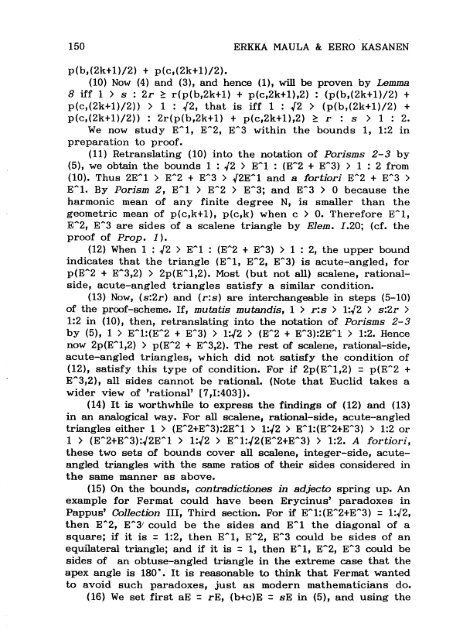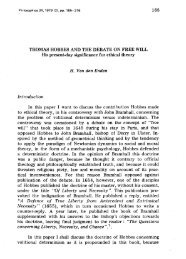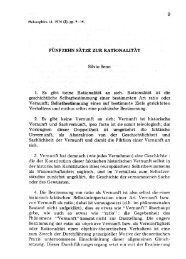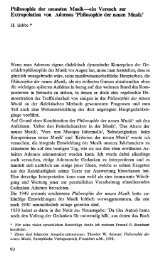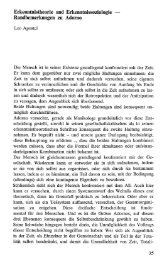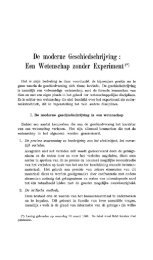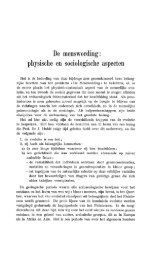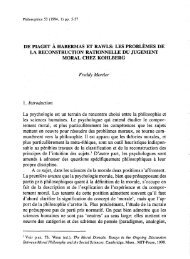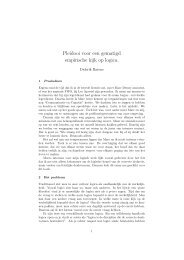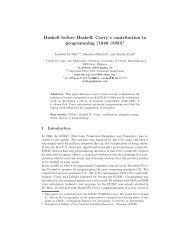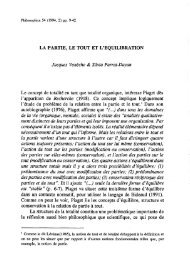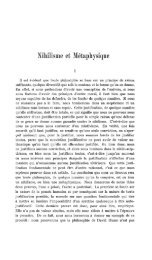CHEZ FERMAT A.D. 1637' Erkka Maula and Eero Kasanen Abstract ...
CHEZ FERMAT A.D. 1637' Erkka Maula and Eero Kasanen Abstract ...
CHEZ FERMAT A.D. 1637' Erkka Maula and Eero Kasanen Abstract ...
You also want an ePaper? Increase the reach of your titles
YUMPU automatically turns print PDFs into web optimized ePapers that Google loves.
150 ERKKA MAULA & EERO KASANEN<br />
p(b,(2k+l)/2) + p(c,(2k+1)/2).<br />
(10) Now (4) <strong>and</strong> (3), <strong>and</strong> hence (1), will he proven by LemmB<br />
8 iff 1 > s : 2r ~ r(p(b,2k+1) + p(c,2k+l),2) : (p(b,(2k+1)/2) +<br />
p(c,(2k+1)/2» > 1 : ..[2, that is iff 1 : ..[2 > (p(b,(2k+1)/2) +<br />
p(c,(2k+1)/2» : 2r(p(b,2k+1) + p(c,2k+1),2) ~ r : s > 1 : 2.<br />
We now study E"'I, E"'2, E"'3 within the bounds 1, 1:2 in<br />
preparation to proof.<br />
(11) Retranslating (10) inta the notation of Porisms 2-3 by<br />
(5), we obtain the bounds 1 : ..[2 > E"'l : (E"2 + E"3) > 1 : 2 from<br />
(10). Thus 2E .... l > E .... 2 + E .... 3 > ..[2E .... 1 <strong>and</strong> B fortiori E"2 + E"3 ><br />
E"l. By Porism 2, E"l > E .... 2 > K"3; <strong>and</strong> E"3 > 0 because the<br />
harmonie mean of any finite degree N, is smaIler than the<br />
geometric mean of p(c,k+l), p(c,k) when c > O. Therefore E .... 1,<br />
E"2, E .... 3 are sides of a scalene triangle by Elem. 1.20; (cf. the<br />
praof of Prop. 1).<br />
(12) When 1 : ..[2 > E .... l : (E .... 2 + E .... 3) > 1 : 2, the upper bound<br />
indicates that the triangle (E"l, E .... 2, E"3) is acute-angled, for<br />
p(E"2 + E .... 3,2) > 2p(E .... l,2). Most (but not aU) scalene, rationalside,<br />
acute-angled triangles satisfy a similar condition.<br />
(13) Now, (s:2r) <strong>and</strong> (r:s) are interchangeable in steps (5-10)<br />
of the proof-scheme. If, mutatis mut<strong>and</strong>is, 1 > r:s > 1:..[2 > s:2r ><br />
1:2 in (10), then, retranslating inta the notation of Porisms 2-3<br />
by (5), 1 > E"1:(E .... 2 + E"3) > 1:,.f2 > (E"2 + E"3):2E"1 > 1:2. Renee<br />
now 2p(E .... 1,2) > p(E"2 + E .... 3,2). The rest of scalene, rational-side,<br />
acute-angled triangles, which did not satisfy the condition of<br />
(12), satisfy this type of condition. For if 2p(E .... 1,2) = p(E"2 +<br />
E .... 3,2), aIl sides cannot be rational. (Note that Euclid takes a<br />
wider view of 'rational' [7 ,I:403]).<br />
(14) It is worthwhile ta express the findings of (12) <strong>and</strong> (13)<br />
in an analogical way. For an scalene, rational-side, acute-angled<br />
triangles either 1 > (E"2+E .... 3):2E .... 1 > 1:..[2 > E .... l:(E"2+E"3) > 1:2 or<br />
1 > (E .... 2+E .... 3):..[2E"1 > 1:..[2 > E .... 1:..[2 (E .... 2+E"3) > 1:2. A fortiori,<br />
these two sets of bounds cover all scalene, integer-side, acuteangled<br />
triangles with the same ratios of their sides considered in<br />
the same manner as above.<br />
(15) On the bounds, contrBdictiones in Bdjecto spring up. An<br />
example for Fermat could have been Erycinus' paradoxes in<br />
Pappus' Collection III, Third section. For if E .... l:(E"2+E"'3) = 1:..[2,<br />
then E .... 2, E"3/ could be the sides <strong>and</strong> E"l the diagonal of a<br />
square; if it is = 1:2, then EAl, E .... 2, E"3 could be sides of an<br />
equilateral triangle; <strong>and</strong> if it is = 1, then E A 1, E"2, E"3 could be<br />
sides of an obtuse-angled triangle in the extreme case that the<br />
apex angle is 180·. It is reasonable to think that Fermat wanted<br />
to avoid such paradoxes, just as modern mathematicians do.<br />
(16) We set first aE = rE, (b+c)E = sE in (5), <strong>and</strong> using the


